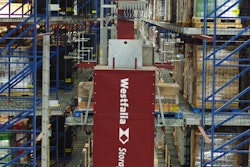
It used to be that “you can pick it up in 20 minutes” was strictly the purview of the takeout pizza industry. But nowadays, customer expectations for fast and flexible delivery options can leave retailers and manufacturers feeling like pizza delivery operations. Or, as my company learned recently through a survey of U.S. and Canadian online consumers, price can be a determining factor in just how fast a customer wants a shipment, with a majority saying they would sacrifice a speedy delivery in favor of low-cost—preferably free—shipping.
The good news though, is that 3PLs are rising to the occasion, and leading the way. Third party providers are helping businesses not just adapt to the new reality of omni-channel, but to really embrace the concept as an opportunity to distinguish themselves from competitors, and to offer a superior customer experience.
Smart 3PLs are really shining in three key areas: Technology, Innovation and Collaboration.
I frequently hear from our customers that they are “drowning in data, but starved for information.” This supports analysis by IBM, which estimates as much as 90 percent of all data generated by devices such as smart phones, tablets, connected vehicles and appliances is never analyzed or acted upon. Further, as much as 60 percent of this data begins to lose value within milliseconds.
Which is why businesses are relying on their 3PLs to capture the truly useful information, and put it to work. The result? Better inventory management, optimal route planning, cost analysis, and perhaps most important, full visibility into everything.
Effective data analysis of course has many benefits, not the least of which is providing a competitive advantage. In fact, a separate analysis by IBM noted that organizations that have successfully integrated analytics, outperform their peers by an amazing 220 percent.
The key to all of this, of course, is a highly integrated technology solution—a warehouse management system that can talk to a transportation management system, with everything linked directly to the 3PL that ties everything together with a “big picture” logistics strategy.
At the core of that strategy, is a data-driven, innovative solution that is essentially customized for a particular business’s precise needs. A medical-products manufacturer in Canada, for example, faced an ongoing challenge of having its B2B shipments packed and ready for shipment in time for its scheduled daily 6pm pickup. The problem, was that that since most of the manufacturer’s customers were doctor’s offices, hospitals and medical supply stores, employees did not get around to placing their orders until late in the day. And once the orders were placed, virtually every one was for next day service.
The manufacturer reached out to its logistics provider, and together they looked at the data, and developed an alternate plan. Now, the manufacturer is able to better predict customer orders, and the 3PL was able to push back its pickup time.
This level of collaboration happens every day. Businesses that a few years ago could not have conceived of accommodating an omni-channel strategy now offer a complete menu of capabilities ranging from “buy online, pickup in store,” to “next day guaranteed delivery” to “buy online, return to store.”
Businesses rely on their 3PLs to be a step ahead of them when it comes to anticipating their needs, and those of their customers. Businesses expect their 3PLs to have timely solutions that will distinguish them from their competitors. And with customer expectations for “faster and better” seeming to intensify by the hour, 3PLs can look forward to a continued seat at the table. Perhaps, in some instances, at the head of the table.
John Costanzo is President of Purolator International.


















